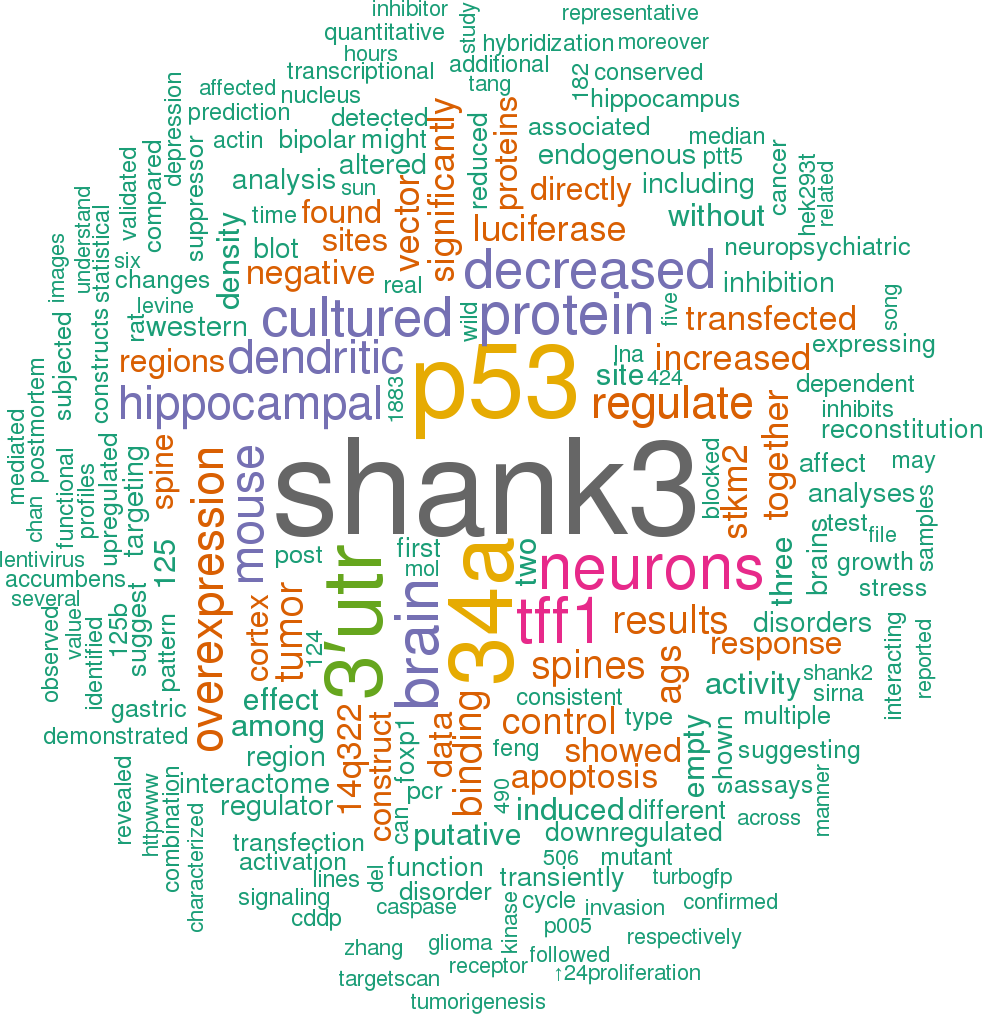Accession
MI0003189
Symbol
HGNC:
MIR504
Description
Homo sapiens
hsa-mir-504 precursor miRNA mir-504
Gene
family?
family?
RF00939;
mir-504
Summary
Caution, this is an AI generated summary based on literature. This may have errors. ?
MIR504, a microRNA implicated in cell cycle regulation through the p53 pathway, has been observed to be downregulated in neurological disorders and is considered a potential therapeutic target for diseases such as ALS [PMC6031650]. It is ubiquitously expressed across various tissues and has been identified as having target sites in wheat unigenes, suggesting a role in plant biology as well [PMC2394755]. MIR504 is involved in the regulation of apoptosis and synaptic vesicle regulation, contributing to its relevance in pathological mechanisms [PMC6031650]. In metabolic disorders, MIR504 expression is influenced by high concentrations of glucose and palmitic acid, which can lead to increased inflammation [PMC7123062]. It targets the adaptor GRB10 and transcription factor EGR2, playing a role in vascular smooth myocyte dysfunction among diabetic subjects [PMC7123062]. Furthermore, MIR504 can downregulate p53 expression directly and has been associated with aggressive cancer behavior [PMC9495382]. It also resides within an intron of the Fgf13 gene and forms part of a negative feedback loop with p53 to prevent transcription at the Fgf13 locus [PMC7123062]. Lastly, MIR504 levels have been linked to insulin resistance and diabetes-related hypertension, indicating its potential as an important biomarker for these conditions [PMC8516748].
Literature search

27 open access papers mention hsa-mir-504
(170 sentences)
(170 sentences)
Sequence
2572
reads,
6
reads per million, 112 experiments
gcugcuguugggAGACCCUGGUCUGCACUCUAUCuguauucuuacugaaGGGAGUGCAGGGCAGGGUUUCccauacagagggc
(((.((((((((((((((((.((((((((((.((.(((....))).))..)))))))))).)))))))))))).))))..)))
(((.((((((((((((((((.((((((((((.((.(((....))).))..)))))))))).)))))))))))).))))..)))
Structure
-g - G -A u u gcu cugu ugggAGACCCUG UCUGCACUCU UC gua u ||| |||| |||||||||||| |||||||||| || ||| cgg gaca accCUUUGGGAC GGACGUGAGG ag cau c ga u G Ga u u
Annotation confidence
High
Do you think this miRNA is real?
Comments
The mature sequence shown here represents the most commonly cloned form from large-scale cloning studies [2].
Genome context
chrX: 138667711-138667793 [-]
Disease association
hsa-mir-504 is associated with one or more human diseases in the Human microRNA Disease Database
| Disease | Description | Category | PubMed ID |
|---|
Mature hsa-miR-504-5p
| Accession | MIMAT0002875 |
| Description | Homo sapiens hsa-miR-504-5p mature miRNA |
| Sequence | 13 - AGACCCUGGUCUGCACUCUAUC - 34 |
| Evidence |
experimental
array-cloned [1], cloned [2], Illumina [3] |
| Database links |



|
| Predicted targets |

|
Mature hsa-miR-504-3p
| Accession | MIMAT0026612 |
| Description | Homo sapiens hsa-miR-504-3p mature miRNA |
| Sequence | 50 - GGGAGUGCAGGGCAGGGUUUC - 70 |
| Evidence |
experimental
Illumina [3] |
References
|



